Originally published in Dawn newspaper on 4 November 2020.
by Madeeha Ansari
A NEPALESE colleague once shared the impact of a well-intentioned government rehabilitation programme for street-connected children. The plan was to take them off the streets and provide protection facilities where basic needs would be addressed — and local NGOs like his were approached for support.
What ended up happening was a crisis of trust. Children would wait, he said, for staff who gave them up to the authorities with “blades hidden in their teeth”, to evade capture.
Nor would they stay in the facilities once enrolled. Children used to independence, even when ostensibly provided with food and shelter, would not be convinced they belonged there. A lot of it was to do with the stigma they had faced, being labelled as lazy, criminal, a public nuisance. But it was also based on the fact that initially top-down policies didn’t adequately consult the real stakeholders.
In Pakistan, there are two trends of concern when it comes to street-connected children. On one hand there is danger of the same story of good intentions being repeated without adequate consultation with children and their families. Secondly, there is a move towards criminalising children for being on the streets, echoed in both public conversation and policy domains. ‘Criminalise child beggary’ is a refrain. What this will effectively mean without addressing the roots of the issues that push children onto the streets is that households and children in extreme urban poverty will be subject to both harassment and criminalisation, for being poor.
With a government that has demonstrated a commitment to protecting street children, we would do well to look at what has and hasn’t worked elsewhere, so that resources are used most effectively. One big first step for the government and the public is to re-examine the lens and language with which we approach children on the streets, and challenge the stereotypes that may misguide our efforts.
For instance, the dominant public narrative is that street children are victims controlled by invisible gangs or ‘mafias’. While this may be true in some cases, street children do not have a single story. They come from diverse backgrounds, including migrant, displaced or Afghan refugee communities. Some may be unaccompanied without access to shelter, but the majority have families to return to and support. In our work, we often come across children who work around school timings to earn. These multiple identities are important to acknowledge, so we can build human stories and understand what greater structural or policy factors drive children to the streets — and how to support them to choose different paths.
At the public level, the language that treats street children as a ‘menace’ creates stigma translating into a less than empathetic approach. ‘Why don’t you work?’ is often a question asked while brushing children off. There is increasing concern expressed on social media that the phenomenon of street children is rising. ‘This is easy money’ is a common response. The truth is, there is no ‘easy money’ unless you’re rich. In a Covid-19 economy with skyrocketing prices and rising unemployment, more and more households are being pushed into making difficult choices.
At the government level, the drive to rid the streets of this ‘menace’ can translate into policies focusing on physical removal of children from the streets, which in the long run may not be sustainable. In Punjab, there has been a wide-scale anti-beggary crackdown, with over 700 children being removed in rescue operations in a single month. While the effort to take positive action is commendable, it won’t address those root causes. In addition, it is a question of human rights for children and their families to be consulted in decisions concerning them. In particular, any enrolment in residential facilities has to be voluntary, now or later.
Worryingly, with the new criminalisation drives, FIRs are being registered against parents. The experience of being taken from the streets by police can in itself be traumatic for street-connected children, as traditionally they are wary of law enforcement agencies. Many belong to informal settlements under threat by the authorities, and those without identification documents are particularly vulnerable. If we add to this the threat of parents being taken to jail, it will deepen the mistrust that children and communities have in the system.
This is not a defence of child labour, or ‘child beggary’. It is simply an appeal to look deeper at our own assumptions. To design responses that account for the nature and scale of the challenges, it will take this: counting the uncounted; seeing the ‘invisible’; and listening to the voices of the unheard. If we really do care, we should be willing to reach out to children and their communities, and engage them in ways that acknowledge their agency and human dignity.
